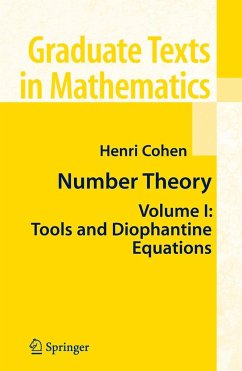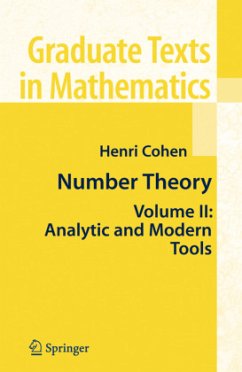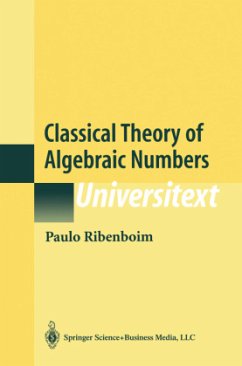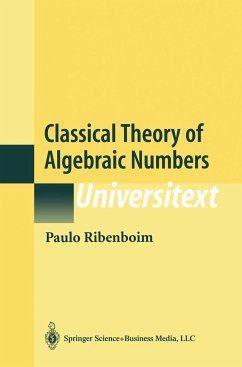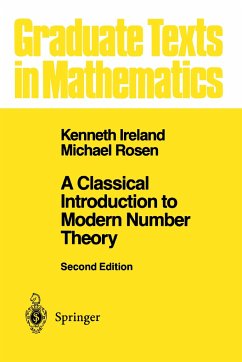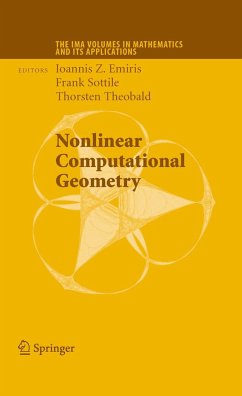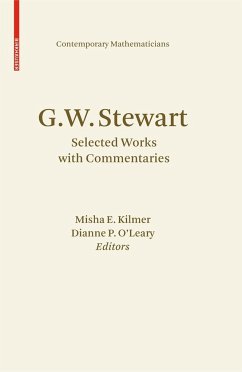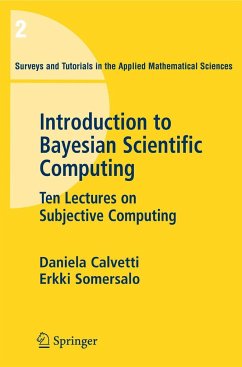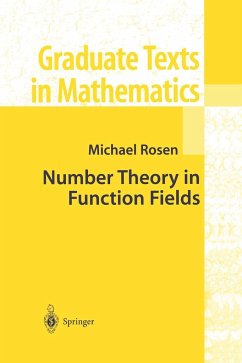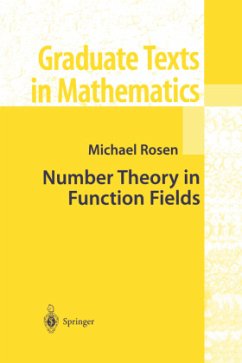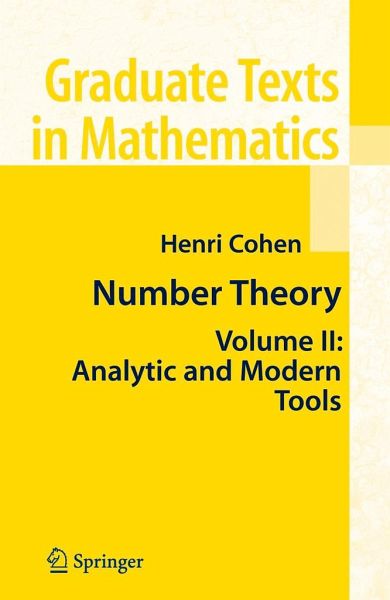
Number Theory, Volume 2
Analytic and Modern Tools

PAYBACK Punkte
19 °P sammeln!
This book deals with several aspects of what is now called "explicit number theory." The central theme is the solution of Diophantine equations, i.e., equations or systems of polynomial equations which must be solved in integers, rational numbers or more generally in algebraic numbers. This theme, in particular, is the central motivation for the modern theory of arithmetic algebraic geometry. In this text, this is considered through three of its most basic aspects. The local aspect, global aspect, and the third aspect is the theory of zeta and L-functions. This last aspect can be considered as a unifying theme for the whole subject.
The central theme of this graduate-level number theory textbook is the solution of Diophantine equations, i.e., equations or systems of polynomial equations which must be solved in integers, rational numbers or more generally in algebraic numbers. This theme, in particular, is the central motivation for the modern theory of arithmetic algebraic geometry. In this text, this is considered through three aspects.
The first is the local aspect: one can do analysis in p-adic fields, and here the author starts by looking at solutions in finite fields, then proceeds to lift these solutions to local solutions using Hensel lifting. The second is the global aspect: the use of number fields, and in particular of class groups and unit groups. This classical subject is here illustrated through a wide range of examples. The third aspect deals with specific classes of equations, and in particular the general and Diophantine study of elliptic curves, including 2 and 3-descent and the Heegner point method. These subjects form the first two parts, forming Volume I.
The study of Bernoulli numbers, the gamma function, and zeta and L-functions, and of p-adic analogues is treated at length in the third part of the book, including many interesting and original applications.
Much more sophisticated techniques have been brought to bear on the subject of Diophantine equations, and for this reason, the author has included five chapters on these techniques forming the fourth part, which together with the third part forms Volume II. These chapters were written by Yann Bugeaud, Guillaume Hanrot, Maurice Mignotte, Sylvain Duquesne, Samir Siksek, and the author, and contain material on the use of Galois representations, points on higher-genus curves, the superfermat equation, Mihailescu's proof of Catalan's Conjecture, and applications of linear forms in logarithms.
The book contains 530 exercises of varying difficulty from immediate consequences of the main text to research problems, and contain many important additional results.
The first is the local aspect: one can do analysis in p-adic fields, and here the author starts by looking at solutions in finite fields, then proceeds to lift these solutions to local solutions using Hensel lifting. The second is the global aspect: the use of number fields, and in particular of class groups and unit groups. This classical subject is here illustrated through a wide range of examples. The third aspect deals with specific classes of equations, and in particular the general and Diophantine study of elliptic curves, including 2 and 3-descent and the Heegner point method. These subjects form the first two parts, forming Volume I.
The study of Bernoulli numbers, the gamma function, and zeta and L-functions, and of p-adic analogues is treated at length in the third part of the book, including many interesting and original applications.
Much more sophisticated techniques have been brought to bear on the subject of Diophantine equations, and for this reason, the author has included five chapters on these techniques forming the fourth part, which together with the third part forms Volume II. These chapters were written by Yann Bugeaud, Guillaume Hanrot, Maurice Mignotte, Sylvain Duquesne, Samir Siksek, and the author, and contain material on the use of Galois representations, points on higher-genus curves, the superfermat equation, Mihailescu's proof of Catalan's Conjecture, and applications of linear forms in logarithms.
The book contains 530 exercises of varying difficulty from immediate consequences of the main text to research problems, and contain many important additional results.





